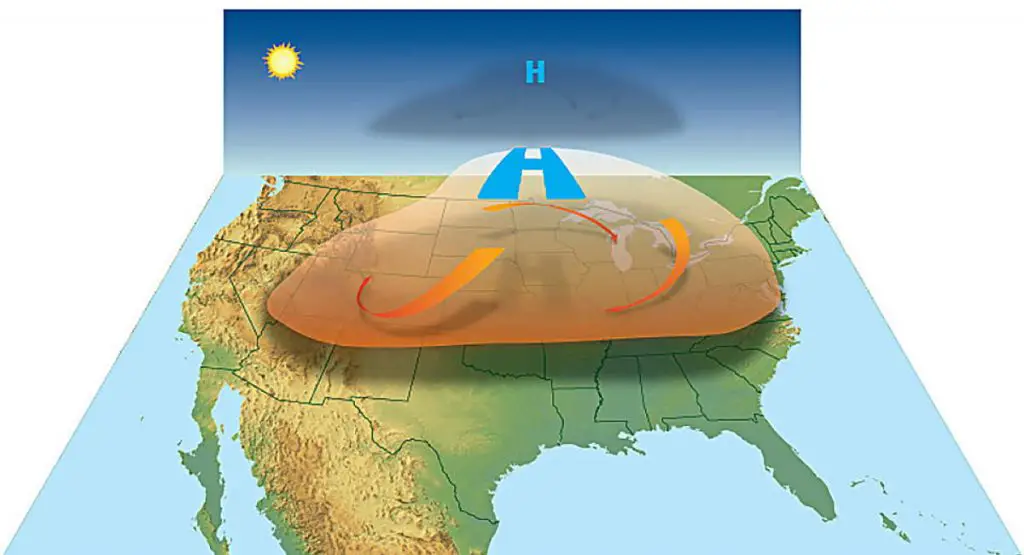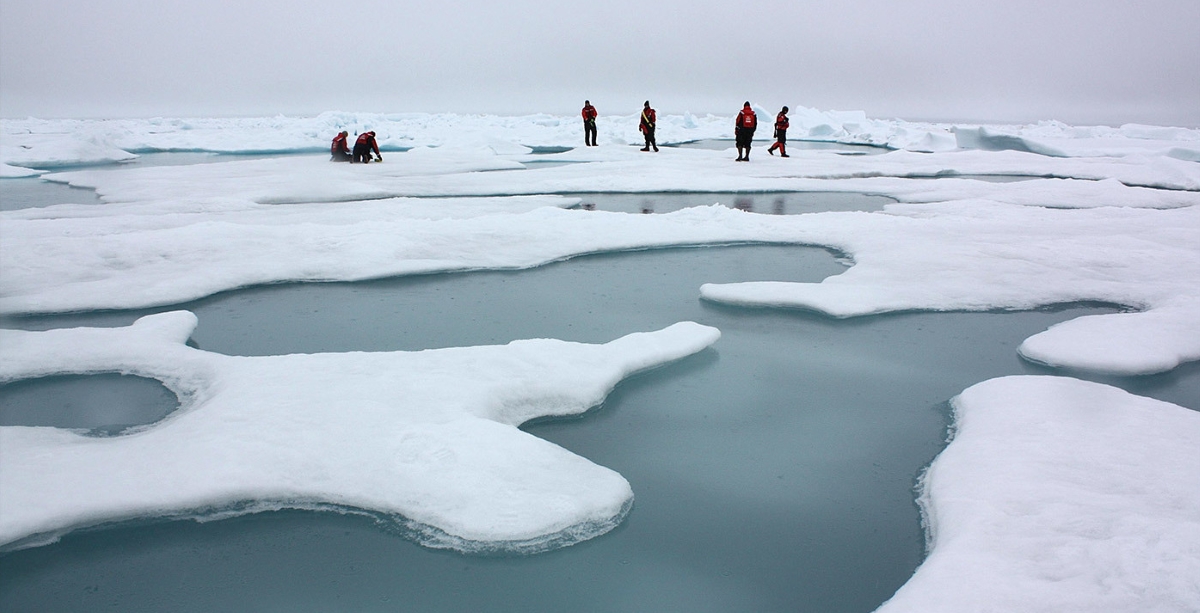As global warming accelerates in recent decades, extreme heat waves have become more frequent. In the summer of 2021, record temperatures are recorded in North America, with Canada and the states in the northwestern United States have reported hundreds of deaths from a heat dome.
What is a heat dome?
A heat dome is a meteorological phenomenon in which high-pressure atmospheric conditions have trapped the hot air coming from the ocean, heating the column of air and compressing it at the same time, like the lid of a saucepan.
According to the NOAA, a heat dome happens when strong, high-pressure atmospheric conditions combine with influences from La Niña (see notes 1), creating vast areas of sweltering heat that get trapped under the high-pressure “dome.”
This high-pressure “dome” causes everything below it to get hotter and hotter.

Record high temperatures due to Heat Dome
On June 29, 2021, Canada experienced its highest temperature ever recorded at 121 °F (49.6 °C), making it the third day in a row that records have been broken.
Heat records were also broken in the provinces of British Columbia, Alberta, Yukon, and the Northwest Territories.
British Columbia Prime Minister John Horgan reportedly said the last heat dome events are “a great lesson that the climate crisis is not fiction”.
Horgan added:
“This is not a British Columbia problem, it is not a Canadian problem, it is a global challenge, and we all need the citizens of the world to come together, as we have openly said, to fight a global pandemic.”
It is expected that (once) extremely rare events like heat domes will become more common due to the general increase in global temperatures.
How to stay cool and safe during a heat dome
To stay cool and safe during a heatwave or a heat dome:
- Drink more water and eat foods with high water content, like watermelon, honeydew or cantaloupe, strawberries, pineapple, peaches, oranges, etc.
- Wear loose-fitting clothing in breathable fabrics
- Stay in the shade if possible and limit travel and excercise
- Wear a hat when you are under the sun
- Use fans and ice to reduce your body temperature
- Take showers with cool water frequently
You should cool yourself off immediately if you have the following symptoms:
- headaches
- feeling dizzy
- loss of appetite
- nausea
- excessive sweating
- cramps
- fast breathing
- intense thirst
Heatstroke can occur if your body temperature rises to 104 °F (40 °C) or higher. In this case, you should seek urgent medical help as heatstroke is a life-threatening condition. Symptoms include red skin, headache, dizziness, breathing difficulties, and confusion.
A lack of sweating occurs in classic heatstroke, but sweating is generally present in exertional heatstroke.
Notes
- El Niño and La Niña are climate patterns in the Pacific Ocean that can affect weather worldwide. During El Niño (means “little boy” in Spanish), trade winds weaken. Warm water is pushed back east, toward the west coast of the Americas. La Niña (means “little girl” in Spanish), sometimes called El Viejo has the opposite effect of El Niño: during La Niña, trade winds are stronger than usual, pushing warm water toward Asia. Off the west coast of the Americas, upwelling increases, bringing cold, nutrient-rich water to the surface.
Sources
- What is a heat dome? on the NOAA (National Oceanic and Atmospheric AdministrationU.S. Department of Commerce) website
- What are El Niño and La Niña? on the NOAA (National Oceanic and Atmospheric AdministrationU.S. Department of Commerce) website
- Heat dome on Wikipedia
- Budget of NASA, Year by Year [1980-1989] - June 10, 2024
- Budget of NASA, Year by Year [1970-1979] - June 10, 2024
- Budget of NASA, Year by Year [1958-2024] - June 10, 2024

